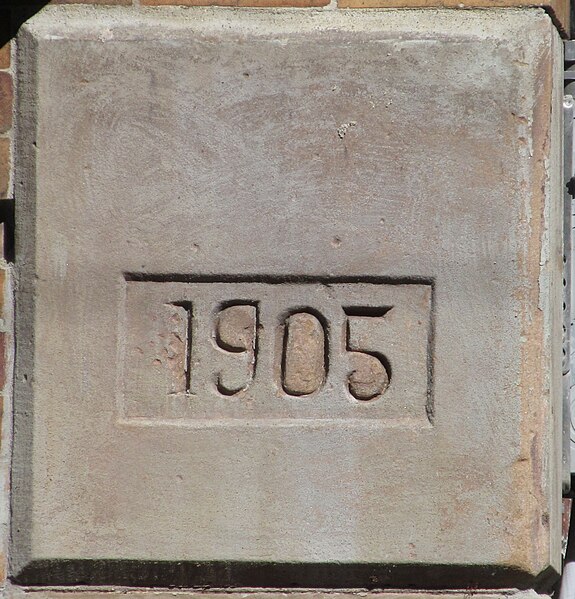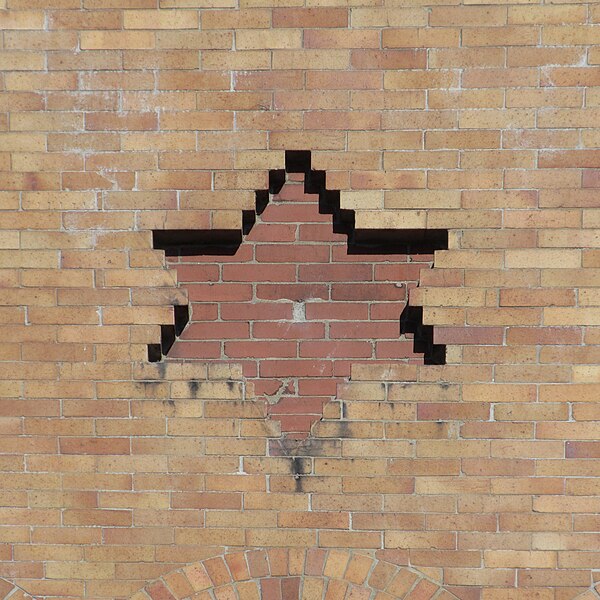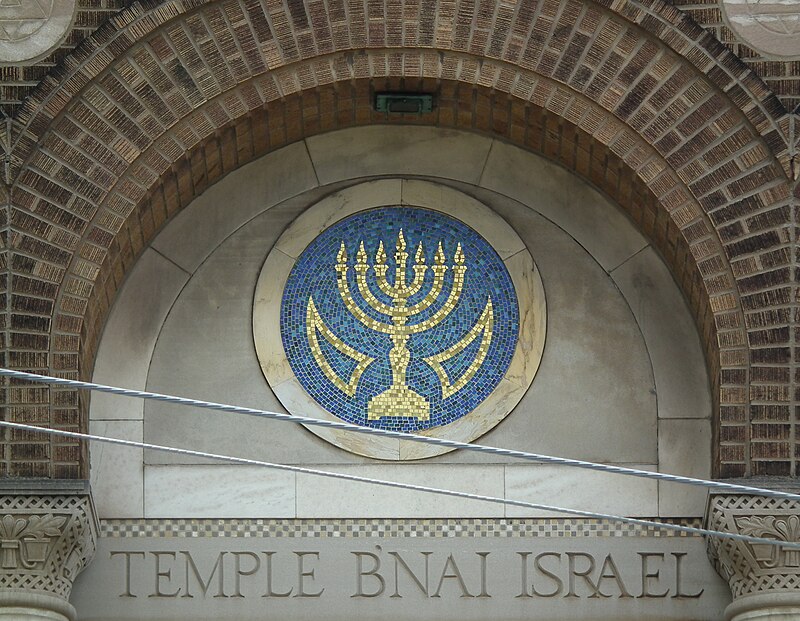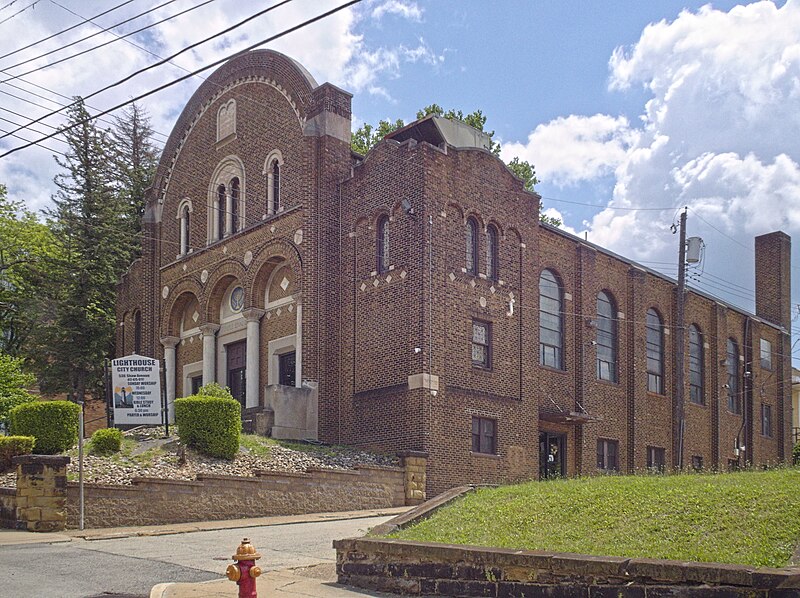
This was the home of the Rodef Shalom congregation for a very short time. It was downtown on Eighth Street, a narrow one-block alley where its site today is a parking lot. In those days, however, Eighth Street was crowded with buildings and institutions, including the Reformed Presbyterian Church, the Christian Home for Working Girls, and the North Public School. Having outgrown their previous building, the Rodef Shalom congregation hired Charles Bickel, probably the most prolific architect Pittsburgh ever had, to design a magnificent temple that told the city its Jewish residents were proud to be part of the social fabric.
Building the new temple required tearing down the old one, but the people of the Second Presbyterian Church around the corner (not the Reformed Presbyterians next door) opened their doors to their Jewish neighbors, and for a year the two congregations shared the Second Presbyterian building, one worshiping on Saturday and the other on Sunday. A news story at the time tells us that, among the Rodef Shalom congregation, “there were many expressions of good feeling over this neighborly act on the part of the Presbyterian neighbors” when the agreement was announced.
The new temple opened in 1901. But the congregation was growing so quickly that, by 1904, it was already too small. Rodef Shalom had to find new quarters, with more land to spread out.
Rodef Shalom today worships in one of the most admired synagogue buildings in America, the magnificent temple on Fifth Avenue designed by Henry Hornbostel.

When we look at the two buildings, designed less than a decade apart, it’s striking how different they are in style. Bickel’s design looks old-fashioned; Hornbostel’s looks forward to the future, and it has stood the test of more than a century’s radical changes in taste.
But a comparison of the two buildings also reveals how much they have in common. Almost all the same design elements are in both buildings (with the prominent exception of the turbaned towers on the Bickel building); it almost looks as though the congregation had told Hornbostel, “We want the same thing we have downtown, but bigger.” (Though it’s not visible in either picture, another feature both buildings share is a large central dome.)
The Bickel building had several decades of life after Rodef Shalom moved out. The congregation sold it to their good friends at the Second Presbyterian Church, who moved into the relatively new building, and were thus able to sell their valuable corner location at Penn and Seventh, where Katz Plaza is today. For many years, the Second Presbyterians and the Reformed Presbyterians coexisted side by side on Eighth Street. The old Bickel building was still there in 1957, according to aerial photos; by 1967 it was replaced by parking lot, which is what has been there ever since.










